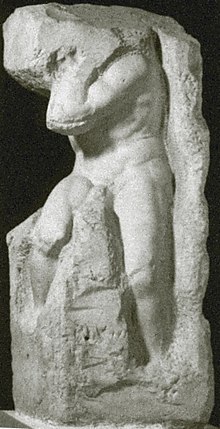Atlas_Slave
Atlas Slave
Statue by Michelangelo
The Atlas Slave is a 2.77m high marble statue by Michelangelo, dated to 1525–1530. It is one of the 'Prisoners', the series of unfinished sculptures for the tomb of Pope Julius II. It is now held in the Galleria dell'Accademia in Florence.
This article includes a list of references, related reading, or external links, but its sources remain unclear because it lacks inline citations. (February 2021) |
You can help expand this article with text translated from the corresponding article in Italian. (December 2011) Click [show] for important translation instructions.
|
